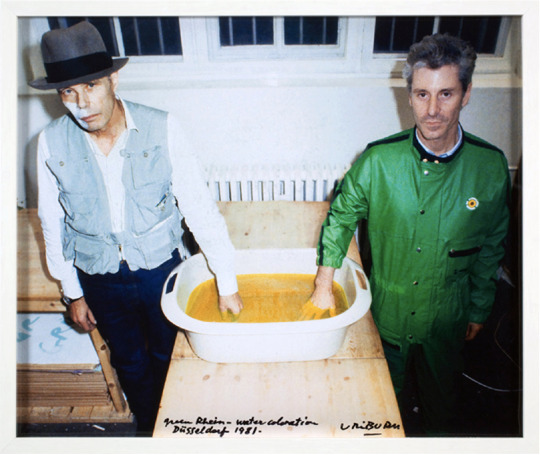#KatarzynaCytlak
Explore tagged Tumblr posts
Photo

Although things have been changing in the last years, history of art has generally been written from a European or U.S.-American perspective. This situation has led to understand other art histories as derivative from the Euro-American canon. But, what happens if a European artist has been appropriating ideas from artists from other non-European latitudes? In her essay “La rivoluzione siamo noi: Latin American Artists in Critical Dialogue with Joseph Beuys, Katarzyna Cytlak” explores this topic, focusing on works by Joseph Beuys and his experience in Latin America. Beuys, considered one of the most famous German artists, has been celebrated for his “ecological works.” However, some of these ideas did not stem from his imagination, but were influenced by the ones of his Argentine peers, notably the works by Nicolás García Uriburu and Víctor Grippo.
As Katarzyna Cytlak noted:
“In the last years of his life, Joseph Beuys became interested in Latin American art as he reinforced his discourse on ecology. His collaboration with Nicolás García Uriburu reproduces the schema of the colonial power relationship, as the Argentinian artist is never officially mentioned in documentations of their actions. Beuys’s works from the mid 1980s, shortly before his death in 1986, could be described as derivative of Víctor Grippo’s and García Uriburu’s artworks.”
This essay not only shows that history needs to be rewritten. It also sheds light on the simultaneity of artistic explorations that were taking place in different parts of the world. To contrast the idea of derivative art, the works examined in this text indicate that Latin American artists had their own explorations, without having to adhere to what was coming from other latitudes.
*
Aunque las cosas han ido cambiando en los últimos años, la historia del arte se ha escrito generalmente desde una perspectiva europea o estadounidense. Esta situación ha llevado a entender otras historias del arte como derivadas del canon euro-americano. Sin embargo, ¿qué es lo que sucedería si un artista europeo se apropiara de las ideas de artistas de otras latitudes, no europeas? En su ensayo “La rivoluzione siamo noi: Latin American Artists in Critical Dialogue with Joseph Beuys” (La rivoluzione siamo noi: Artistas latinoamericanos en diálogo crítico con Joseph Beuys), Katarzyna Cytlak analiza este tema, centrándose en las obras de Joseph Beuys y su experiencia en América Latina. Beuys, considerado uno de los artistas alemanes más famosos, ha sido celebrado por sus “obras ecológicas”. No obstante, algunas de estas ideas no surgieron de su imaginación, sino que fueron influenciadas por la de sus pares argentinos, entre las que destacan las obras de Nicolás García Uriburu y Víctor Grippo.
Como señala Katarzyna Cytlak:
“En los últimos años de su vida, Joseph Beuys se interesó por el arte latinoamericano al reforzar su discurso sobre la ecología. Su colaboración con Nicolás García Uriburu reproduce el esquema de la relación de poder colonial, ya que el artista argentino nunca fue mencionado oficialmente en las documentaciones de sus acciones. Las obras de Beuys de mediados de la década de 1980, poco antes de su muerte en 1986, podrían describirse como derivadas de las obras de Víctor Grippo y García Uriburu”.
Este ensayo no sólo muestra que es necesario reescribir la historia. También arroja luz sobre la simultaneidad de exploraciones artísticas que se dieron en distintas partes del mundo. Para contrastar la idea de arte derivado, las obras discutidas en este texto muestran que varixs artistas latinoamericanxs realizaron sus propias exploraciones, sin tener que adherirse a lo que venía de otras latitudes.
Katarzyna Cytlak, “La rivoluzione siamo noi: Latin American Artists in Critical Dialogue with Joseph Beuys,” Third Text, vol. 30, n° 5–6, (2016): 346-367.
Click here to read the full essay / Clica aquí para leer el ensayo completo
Photo: Nicolás García Uriburu and Joseph Beuys, “Colouration of the Rhine,” 1981, colour photograph, 9 x 13 cm, private collection, Buenos Aires. Photo credit: Henrique Faria Gallery, New York and Buenos Aires.
#rethinkingconceptualism#rewrite#art history#conceptualart#conceptualism#joseph beuys#NicolásGarcíaUriburu#VíctorGrippo#KatarzynaCytlak
2 notes
·
View notes